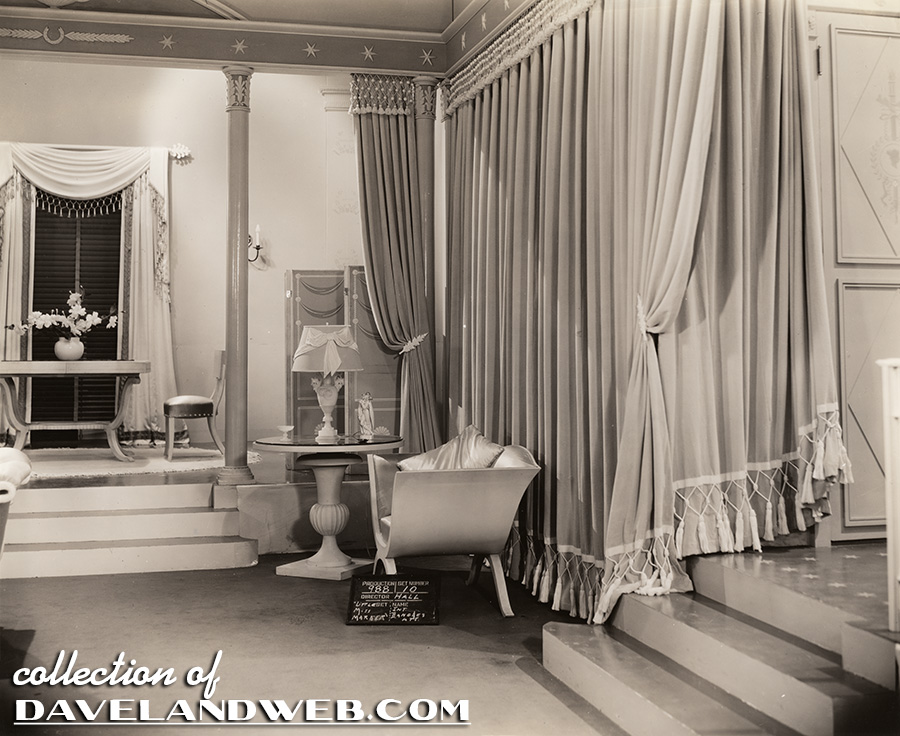
Time to bring this series of “Little Miss Marker” (1934) set stills to a close! First up is the plush apartment of Bangles Carson (Dorothy Dell). In the screenshot below, crusty Sorrowful Jones (Adolphe Menjou) drops by to see how Marker/Marky (Shirley Temple) looks in the new clothes Bangles picked out for the little girl.

A detailed view showing the thought and care that went into decorating the set, right down to the curios on the table.

Another angle of Bangles’ apartment:
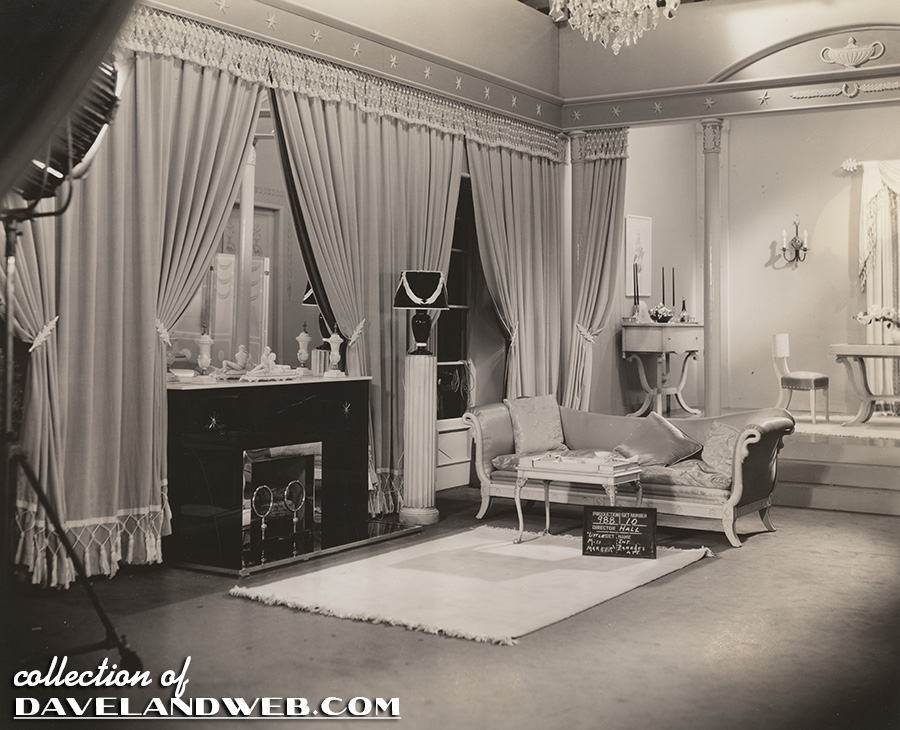
This part of the set is shown during a key scene where the relationship between Bangles and Menjou begins to change.

Despite the age and appearance gap, the expert performances between Menjou and Dell make the chemistry appear real. Makes me think of “Easter Parade.” Even though Peter Lawford seems like a better physical match for Judy Garland, you still root for Fred Astaire!

And speaking of performances, the musical number between Dell and Temple (“Laugh, You Son of a Gun”) shows the loving chemistry between these two performers. Dell had the sex appeal of a Mae West and the husky voice of an Alice Faye. In addition, she had a vulnerability that made her even more appealing. It makes one wish she hadn’t died so young and that she and Temple could have been paired again. Personally, I think she could have given “Now and Forever” a bit more heart than Carole Lombard did.

When Marky needs an operation, the best doctor for the job must be torn away from his wedding day to perform the surgery. This overhead shot is most likely a combination of a set and a matte painting:

The lobby of the church was definitely a set:
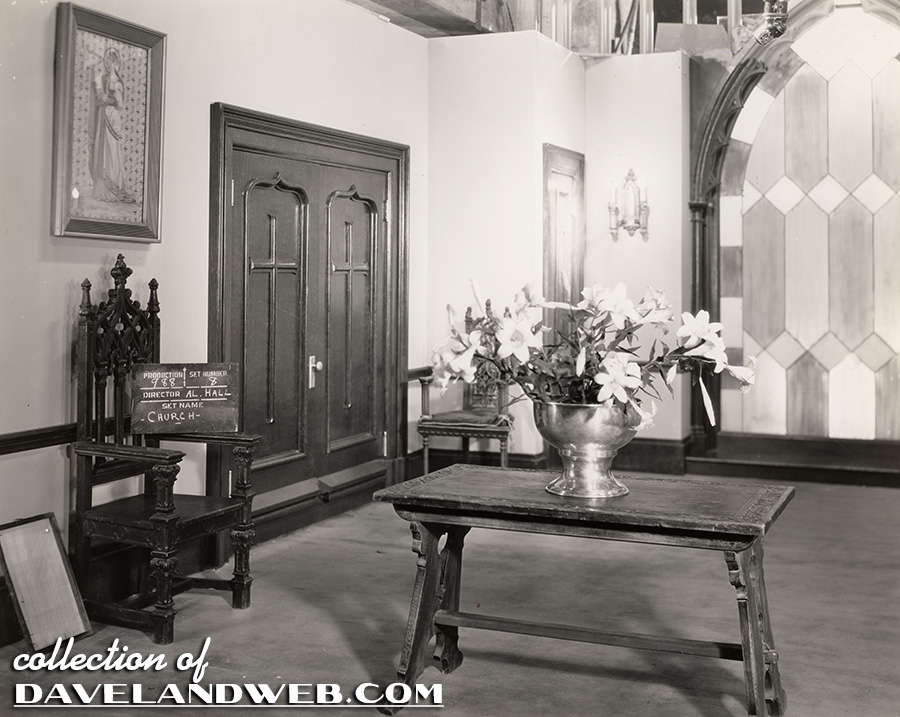
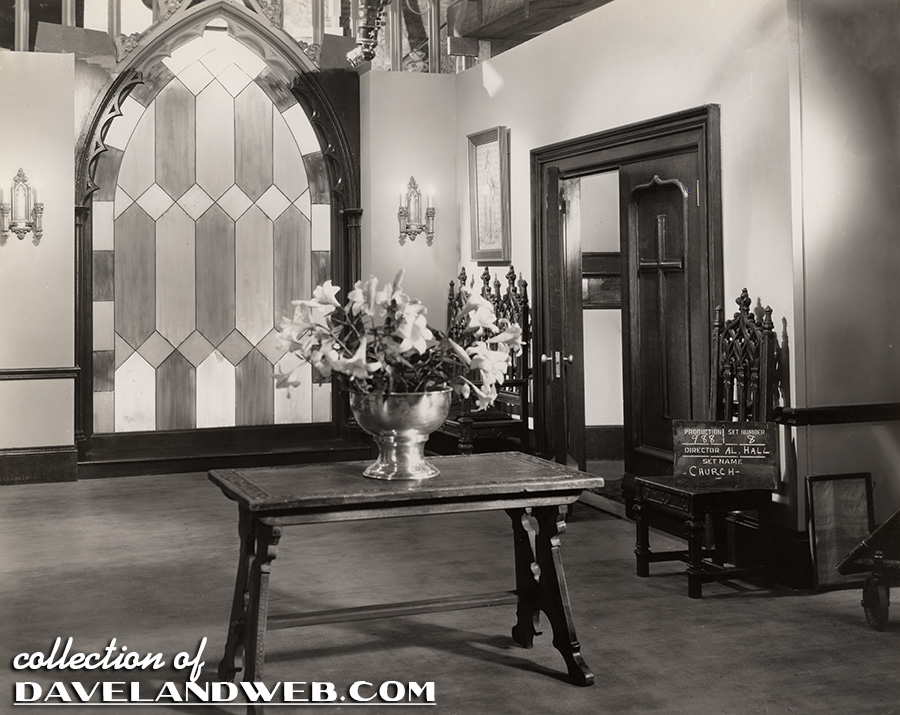
Combining a few screenshots, I was able to get this panoramic view from the film, showing the Doctor (Frank Conroy):

A closeup of the “stained glass”:

A few stills showing the lobby and elevator of the hospital:
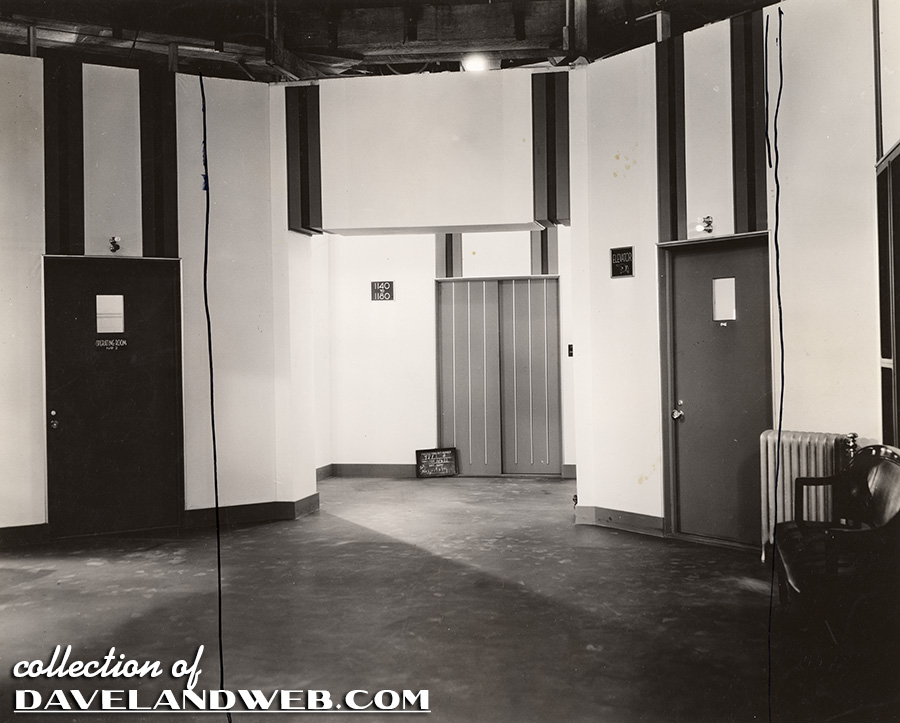

Big Steve (Charles Bickford) exits the elevator with the intent of revenge on Bangles and Sorrowful for their betrayal of affections:

Another view of the hospital lobby including the nurse’s desk:
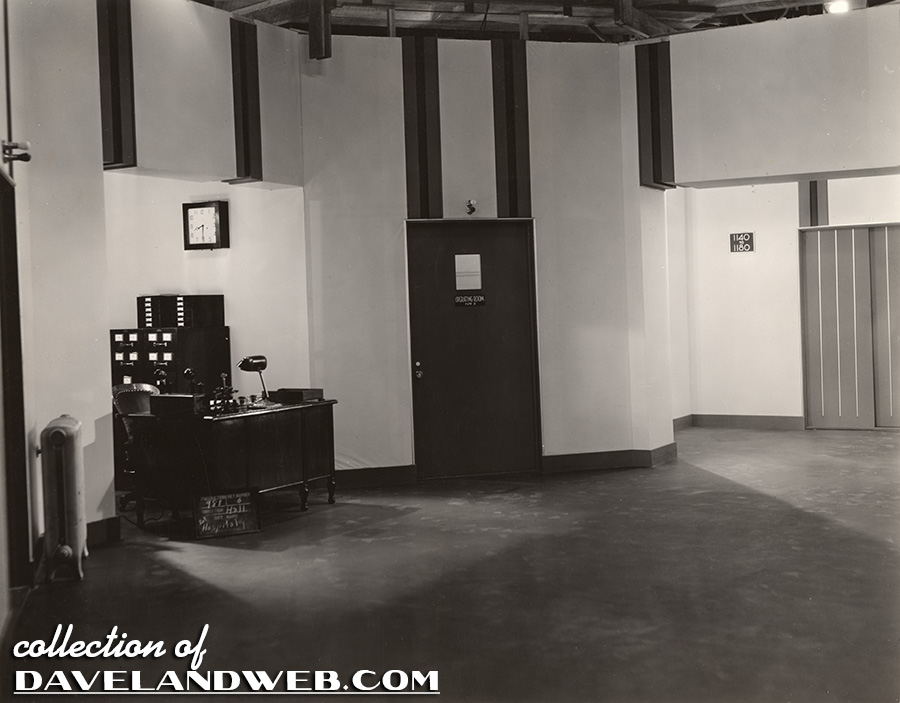
A corresponding screenshot where everyone waits anxiously for a donor for Marky’s surgery:

With some Photoshop magic, I was able to create this panoramic view from the set stills:
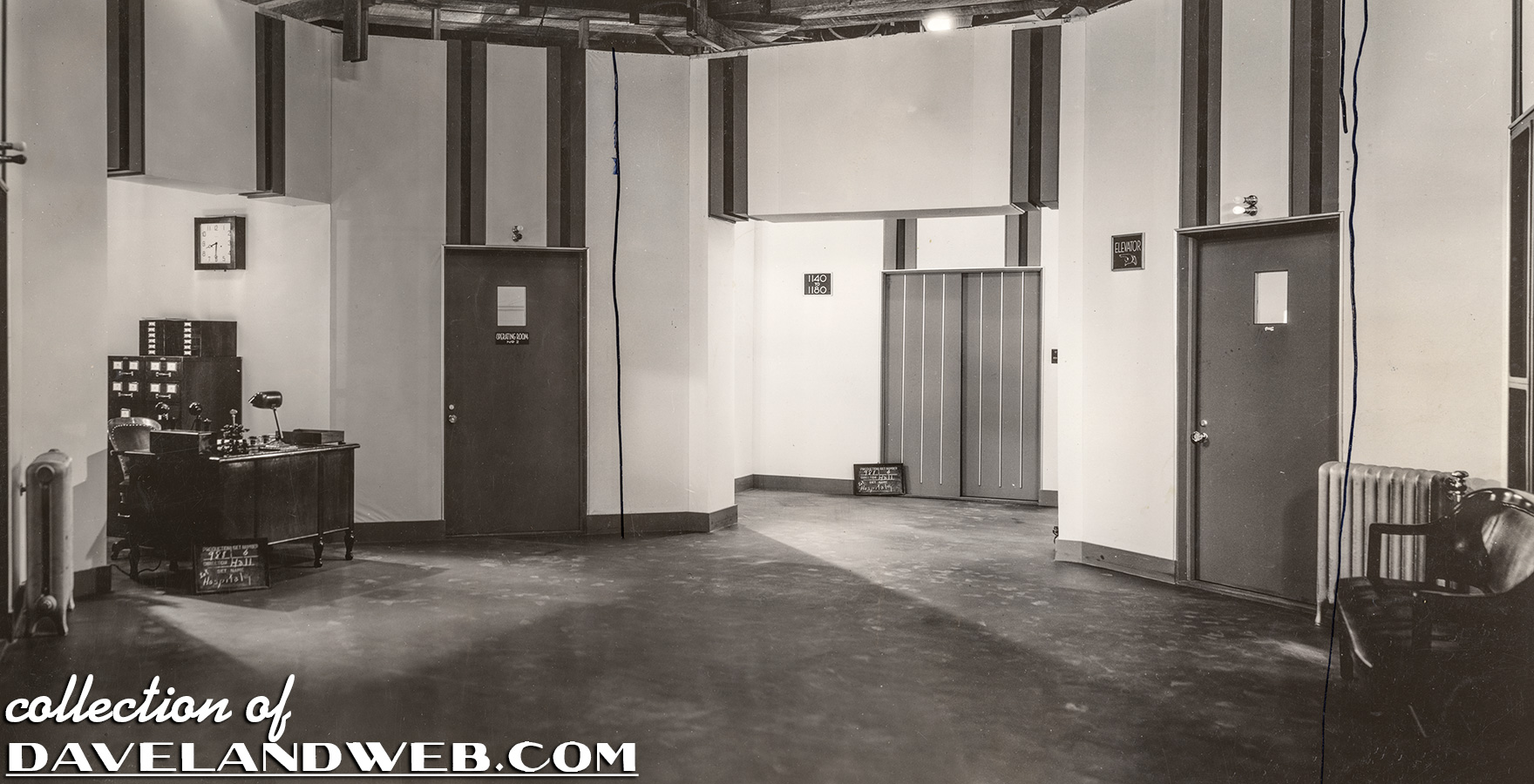
The set for the operating room; note the crude sketch showing which bed Shirley would be in. You can also make out the faint writing that states as much:

The corresponding screenshot where Big Steve is the blood donor for Marky:

Even for a movie oft-watched, you can catch new details, such as the Nurse getting high on what I would “assume” is oxygen, but in Hollywood, one never knows!

The Damon Runyon story on which the film drew its inspiration was first published in Collier’s magazine, March 26, 1932:

The story is darker and doesn’t have the same ending as the movie.

One of the ads in the magazine features a Philco 112X floor model console radio; remember, this was back in the day when families gathered around a large radio for their entertainment instead of a TV or computer screen.

A detailed view of the radio, housed in a gorgeous wood cabinet:

I was able to find a few shots online of one for sale:

Can you imagine if this kind of craftsmanship was put into TV/Computer Screens today?!? Edited from tuberadioland:
The Philco model 112X was introduced in January of 1932, billed as the first radio scientifically designed as a musical instrument. It used an updated version of Philco's 11-tube superheterodyne plus chassis and was the company's first model to use the inclined sounding board, a new invention that was their latest salvo in the ongoing battle for superior tone. It looked radically different to any Philco that had preceded it and this prompted the use of another catchy marketing phrase: It Looks Different. It Sounds Different. It IS Different! The importance of this innovation was such that, starting with the 112X, models using it would have an X appended to the model number. The 112X's cabinet was styled by Edward L. Combs (patent), who was also responsible for the design of the cabinets for the very successful models 70 and 90, introduced the previous June. The "inclined sounding board" was designed to provide clearer high frequency reproduction by directing high notes up towards the listener and away from the floor - keep the music off the floor they proclaimed. Furthermore, according to ads for the 112X, high frequencies emitted from the cabinet's rear were not only attenuated by Philco's new echo absorbing screen, mounted behind the speaker chamber, but were moreover directed down to the floor instead of being reflected back to the listener off of walls behind the radio.
.jpg)
One of the illustrations from the Collier’s article:

…and the corresponding scene from the movie:
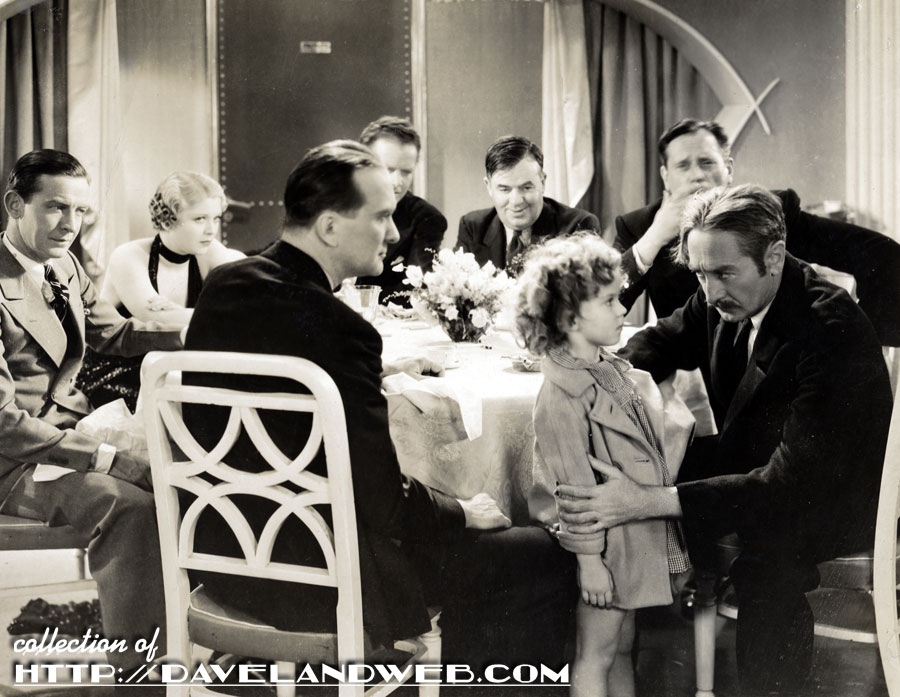
Stay tuned for another upcoming series featuring set stills from Shirley’s other Paramount film, “Now and Forever”!
See more Shirley Temple photos at my main website.

No comments:
Post a Comment